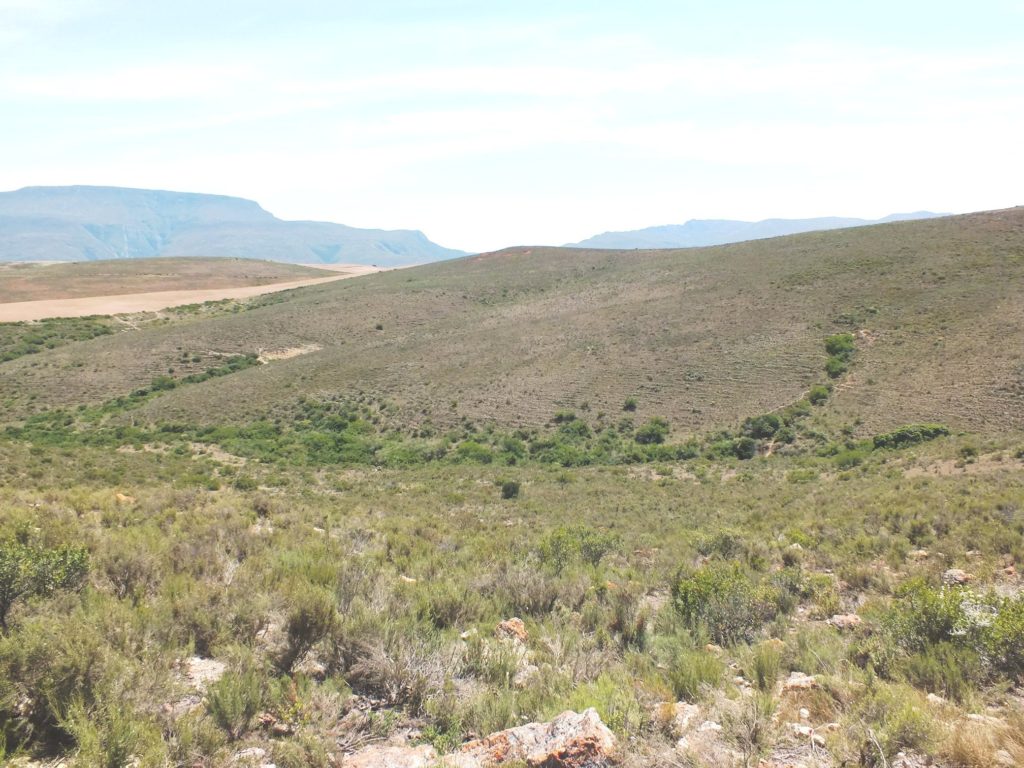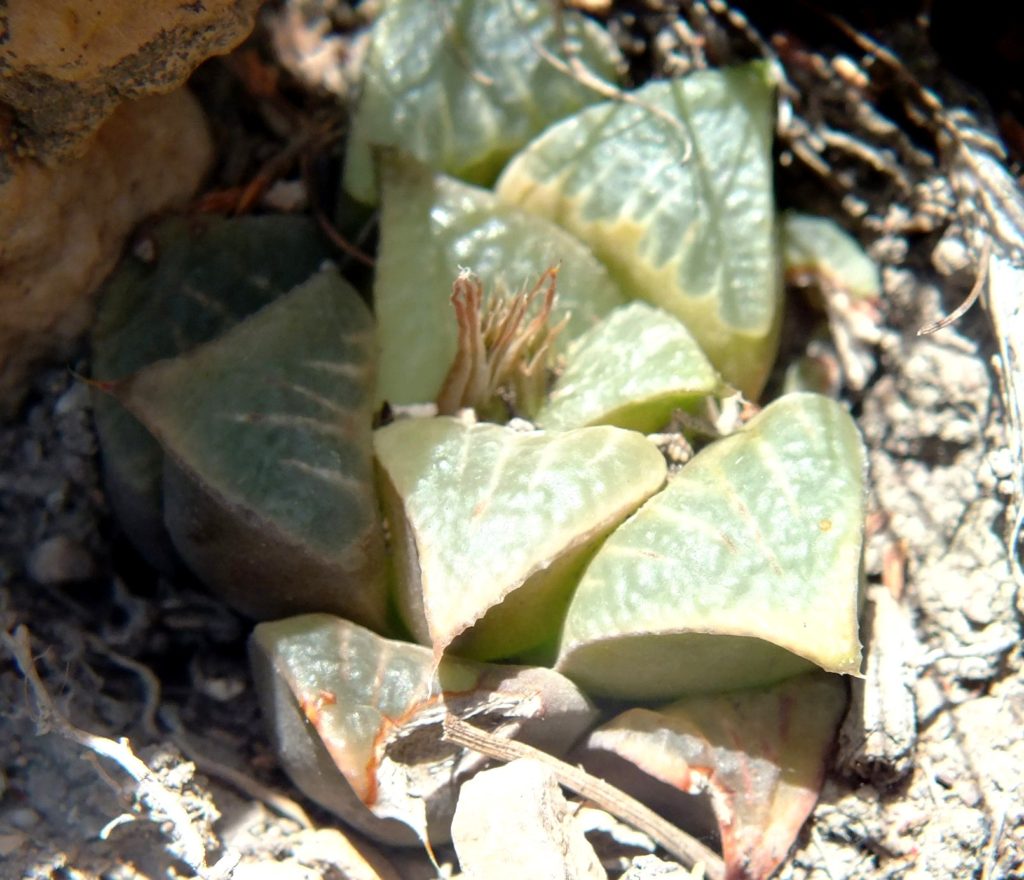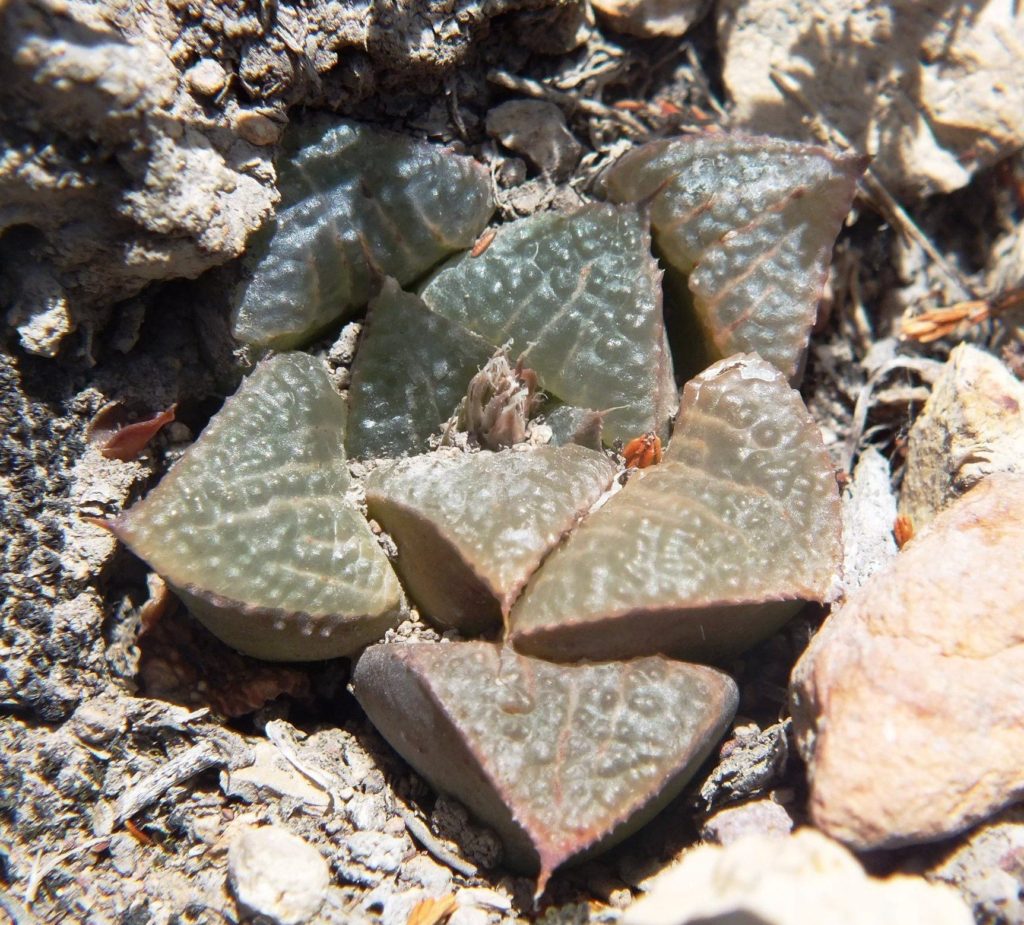30. 2019.6.3 – Yet another set again with incredible variation and seemingly setting itself apart from the others in the general area. Steven has given me a very nice summary of the geology of the southern Cape – it really needs to be understood to make any sense of these retusoid/mirabiloids to recognise and dismiss the utter nonsense made of the classification of these plants.
31. 2019.6.4 – These were more scattered plants on the upper level of the terraces S Tradouw.
32. 2019.6.6 – This is a very retusoid set of mirabiloids and I hope the message is getting across that even in a small defined area it is difficult to form a clear picture of an element that stands apart from a great many others. A lot more to come. Jaap Viljoen sent me a very nice article on Lithops where the number of species is reduced. Curiously the author refers to his new set of accepted species as his “species concept”. What he means is that it is his concept of the species that constitute the genus Lithops. While obviously based on geographic distribution he says not a word about what his concept of a species actually is.
A new taxonomic approach for the genus Lithops N.E.Br – Harald Jainta
33. 2019.6.6 – Last population from south Tradouw and it is really worth considering each plant individually and asking just what it tells you about any relationship to mutica, mirabilis, retusa or any other “ii” or “iae”s – even to the rest of the S Tradouw set. The habitat like in one or two other instances, is not the decayed under layer to a cemented top. The southern Cape had an old sea or lake floor that deposited a geologically young sea-bed terrace. The upper layer was cemented by mineral accumulation ferricrete, calcrete, silcrete. Massive erosion has subsequently removed most of the terrace leaving many other exposed terraces of different ages as well as more recent ones. The old under layer never formed a really hard vitrified shale and has been leached of many of the minor elements to leave a very erodible clay = kaolinite. It is surprising how variable the old terrace actually was as there is a manganese predominance in the west while another clay = bentonite occurs eastwards, often as ocher. Clay is a critical component of soil and its complexity is mentally more challenging than I can manage.
Steven Molteno summarised a bit about the Southern Cape Geology … Ancient river systems are the main influence on the geology of the Buffeljags-Swellendam area. So the area’s geology is composed of multiple layers of alluvial gravels. All of which sit on top of a deep basin of older Bokkeveld shales and Wagendrift sandstone/shales.
So for the alluvial layers:
• The youngest gravel layers are obviously the lowest ones, and closest to the modern river. They’re almost always loose and uncemented.
• The older gravel layers are the higher terraces; The oldest become silcretes (soils fossilised in dry climate) or ferricretes (soils fossilised in wet climate). Others haven’t been cemented yet, so they’re just high-level colluvial terraces (uncemented cobbles like the marginata terraces at Drew).
• The oldest of all are not even gravels anymore. They’re the Enon conglomerate from the Cretaceous, and this survives in the area immediately around Swellendam and also in a patch just north of Buffeljags.
The character of these terraces is determined by the origin of the alluvial cobbles (quartzite clasts, sandstone, or maybe even shales), as well as the nature of the matrix cement (usually a reddish silt, but can vary). This means that each layer can have a unique soil and a unique flora. It’s also possible to correlate the remaining patches of a certain altitude, in order to reconstruct the original alluvial layer before most of it was washed away and replaced by younger, lower layers. The Bontebok Park is particularly dominated by these layers.
2019.6.8 – What am I doing? I started off just to share a bunch of pictures I was enjoying. I am reminded of “The Rime of the Ancient Mariner” by Samuel Taylor Coleridge. Why he shot the Albatross is an unanswered question as he stays bound to tell the story of how it was hung around his neck and later dropped off, for seemingly the rest of his life. Haworthia seems to be my albatross and it really dropped off when I wrote Update 8. Anyone seeing these pictures should read that document (haworthiaupdates.org Vol 8) that deals with flower character in Haworthia. It will explain why I will accept H. groenewaldii as a species other than as H. mutica, only if it grows wings and flies somewhere else. In vol 8 I explain why I consider mutica to be even conspecific with H. retusa. There are far more intractable problems in Haworthia than this. As for the albatross. The memory lives on! Curiously I can’t remember a single validation from anyone regarding those 12 or so Updates. So while laboriously telling my story it appears that no one has been listening! As Lawrence said “if they ain’t learnt, you ain’t taught”!
References:
Haworthia mutica (groenewaldii) and its twisted leaves.
What is typical Haworthia mutica?
Haworthia flowers – some comments as a character source, part 1
Haworthia flowers – some comments as a character source, part 2
Haworthia flowers – some comments as a character source, part 3
Haworthia groenewaldii I. Breuer spec. nov.
“If the student hasn’t learned, the teacher hasn’t taught.” ~ Henrietta C Mears























































